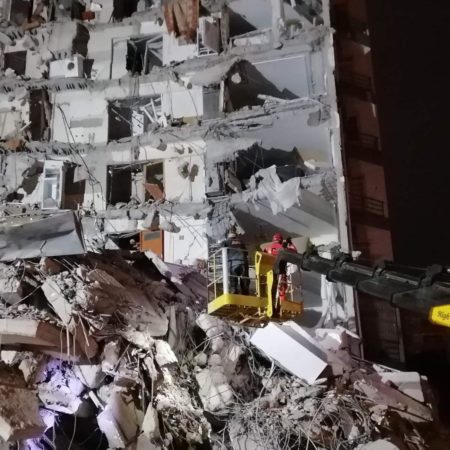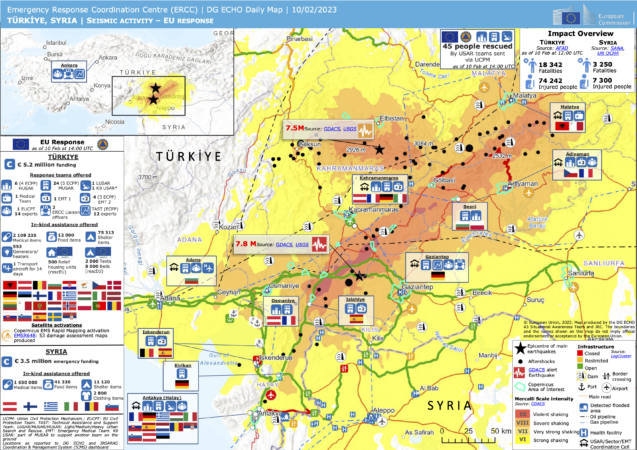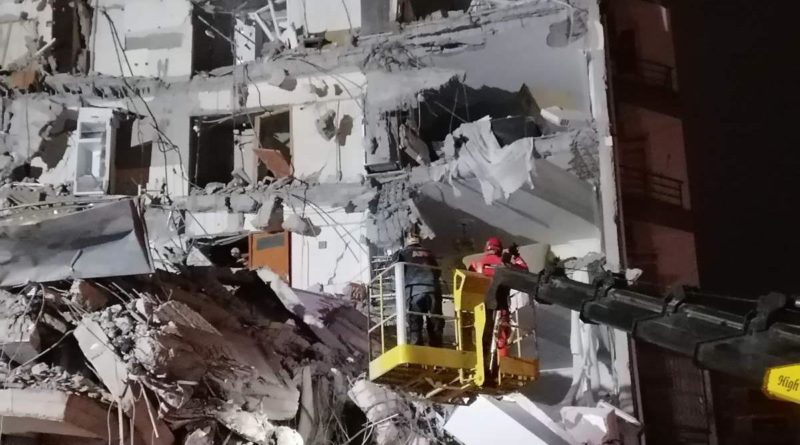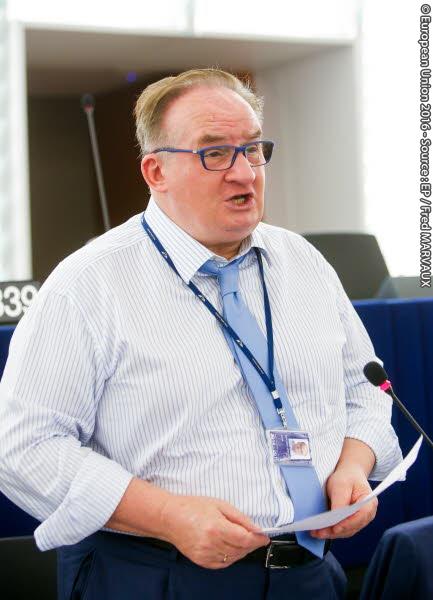[Analysis] The Alliance's little lie about humanitarian aid to Turkey after the earthquake
(B2) The earthquake in Turkey took the Atlantic Alliance by storm. The organization which usually carries out its action in a linear, planned way, in fact found itself quite helpless in the face of this earthquake which required the rapid dispatch of men and materials. It has tried hard to prove the effectiveness of its rapid reaction device (EADRCC). At the cost of an artifice bordering on lies.

What does the Alliance say?
« More than 1400 emergency response personnel from more than 6 NATO Allies and partners — including Finland and Sweden — are deployed in Turkey to help respond to the February XNUMX earthquakes says the Alliance in a communicated released on Tuesday. It is indeed true. There is " more than 1400 rescuers and 100 search dogs » sent on the spot from the beginning.
What the Alliance fails to say is that this aid was mainly provided under the European Commission's European Civil Protection Mechanism (UPCM) (1). In fact, according to our information, only two countries (Iceland and Azerbaijan) replied through the NATO centre. All the other European countries which sent aid (26 EU countries, as well as three third countries (Albania, Montenegro and Serbia)) — preferred to go through the European Civil Protection Mechanism.
A reality that is all the more difficult to accept on the side of the Alliance, since Turkey – although not a member of the EU, but a participant in the European civil protection mechanism – triggered the European mechanism first. Because she knows its effectiveness for having tested it several times. It was only six hours later that she triggered the NATO mechanism.
NATO's Pious Lie
When NATO asserts that the " Support is provided through NATO's Euro-Atlantic Disaster Response Coordination Center (EADRCC), the Alliance's primary civilian emergency response mechanism in the Euro-Atlantic area », we thus pass from the pious lie by omission, to the false assertion. Especially when the Alliance fails to say a single word about the action of the European Commission (2). An oversight that is all the stranger since the two organizations have sworn to each other, through successive EU-NATO declarations, to cooperate, particularly in civilian areas.

Why the EU and not NATO ?
It's simple, the EU Civil Protection Mechanism has several strengths. Starting with his experience, his scope of action... and his budget!
30 Years of Experience
Attached to the European Office for Humanitarian Aid, created thirty years ago, in the middle of the war in Yugoslavia in 1992, this mechanism, created in 2001, is now particularly well established. It brings together, beyond the members of the European Union, eight countries from the European neighborhood, including Turkey. According to a fairly simple principle: “You help me one day, I'll help you the next day”.
A very civil operation
It functions as an exchange between the requesting country and the countries sending men and materials. And according to one principle: the “neutrality” of action. His intervention is intended to be "apolitical", "civil" and above all "odorless". Each country can thus claim the aid sent as national and purely civilian (even if it is often provided by the military). Through NATO, aid immediately appears to be very political and very military. Logically, the role of NATO remains a politico-military organization, unlike the European Union, a politico-civilian organization.
A crisis room prone to disasters of all kinds
Its 24-hour command room (aka ERCC) regularly manages a whole series of emergencies: from summer forest fires to earthquakes or technological disasters, such as the explosion in the port of Beirut (see file No. 86. Europe facing the crisis in Lebanon after the explosion of August 4, 2020), via the Covid-19 crisis or the wars (read: Humanitarian aid, civil protection and Medevac. The European aid plan for Ukraine).
A powerful financial asset
Above all, the EU mechanism has a damn effective argument: money and organization. With a substantial budget (3), it makes it possible to finance a good part of the costs: 75% of the operational deployment costs (in particular transport of equipment and teams) are covered in the case of Turkey, confirmed to B2 a rescue officer. In other words, a sacred incentive. Because the rest of the costs (staff salaries, etc.) are in any case borne by the States.
An administration dedicated to crisis response
The device is also very well established. In 2021, it was triggered 114 times. In other words, once every three days. Managed by a Directorate-General of the Commission, that in charge of Humanitarian Aid (DG ECHO), it anticipates crises, by signing framework contracts either with NGOs (for humanitarian aid) or with suppliers. To this must be added the European Commission's emergency reserve (RescUE) set up in 2019 and reinforced after the Covid-19 crisis, making it possible to have several stocks or specialized services to respond to certain emergencies (fires forests, medical, CBRN).
Comment: a very childish game
One can understand why a state, even a member of the Alliance, prefers to go through the EU system rather than NATO. It has neither this organization nor this budget. Between the two, it's a bit of a comparison between a professional football club and an amateur Sunday buddies club. There is no photo. Rather than ignoring the European Union, in a rather childish way, NATO would do well to put it forward to boast of the good cooperation that reigns (even if there is little in this case) between the two organisations. Instead, we are in a kind of "pant branding", particularly pitiful, all the more serious in the midst of Russia-West tension, where disinformation is raging. The Alliance would not want to give evidence to Russia, which regularly accuses NATO of lying about the war in Ukraine, that it would not do it otherwise...
(Nicolas Gros-Verheyde)
- More than 1400 rescuers and 100 search dogs, 29 search and rescue teams, 6 medical teams according to the EU statement.
- Questioned by us, NATO proved unable to detail, country by country, the number of rescuers sent. Admitting that this number has been compiled based on official Turkish and Allied announcements ».
- Civil protection has €3,3 billion available over the seven-year budget period, i.e. almost half a billion € per year on average, including €170 million for the RescUE forest fire system alone in 2023. As for the budget for humanitarian aid, it amounts to 1,7 billion in 2023.
Read our sheets (reserved for members):
Updated 12.2 23:50 p.m. - number of intervening European countries + the intervention map


